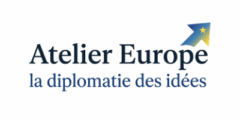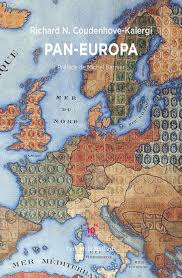The fundamental challenge
As a truly holistic project, the Green Deal requires the implementation of a number of components in order to attain climate neutrality. One of these components, the circular economy, must represent “half” of the E.U.’s effort to reduce net carbon emissions to zero by 2050, making it the priority of the “Deal”.
The plan endorsed by Ursula Von der Leyen is rather ambitious. So far, it comprises twenty policy propositions, from the creation of an investment plan for a more sustainable Europe, to the introduction of a cross-border carbon tax, as well as the partial transformation of the European Investment Bank into a climate bank, and the adoption of a new European industrial policy.
Currently, it also includes the promotion of short food supply chains in connection with a reform of the Common Agricultural Policy. It also provides for access to clean, safe, and affordable energy, and to sustainable transportation, as well as the preservation of biodiversity and a zero-pollution goal.
But it will take a number of steps to get this immense project off the ground, and each step presents its own set of challenges.
A naming challenge
The Commission’s new “software” will require reconciling apparently contradictory objectives. Adequate financing will also need to be found to engineer this paradigm shift in numerous sectors, such as energy, goods and services production and distribution.
Though the quest to “green” E.U. policies is not a new one, the challenge has always been to combine economic development and ecology, without putting them at odds.
Thus, Europeans have begun work on an enormous project: defining the criteria that will allow an economic activity – such as transportation, energy, agriculture, finance, etc. – to be considered ecological. This taxonomy challenge is crucial to the continent’s industries. Brussels, the Commission, the member states, the European parliament, and lobbyists are all already seeking to weigh in on this complex legislative process.
A financing challenge
Financing this transition will be another of the major issues faced. In addition to the question of how much, evaluating the pace and order in which to promote sectors will require an overall economic anticipation of the internal market.
Commissioner Dombrovskis’ task is to transform the European Investment Bank into a climate bank. He will need to oversee a new financing strategy involving the issuance of “Green Bonds”. He must also coordinate Ursula Von der Leyen’s investment plan for Europe, which promises to free up over a trillion euros for the transition over the next decade.
A political challenge
The results of the May 2019 EP election saw net gains for green parties and for environmental policies. Civil society by and large seems to be taking environmental issues into account. The Commission must now find a way to integrate these parties in the promotion of the “Green Deal”, whose concept is drawn in part from the Green movements, and has been refined over the last ten years, as author Jeremy Rifkin points out in his latest work.
Frans Timmermans, the Green Deal Commission vice president, has positioned himself as the guardian of climate, but has remained vague on the specifics of the project in his presentation to the European Parliament on October 8. The presentation was generally successful, despite some reserves on the part of the Greens and the EPP. Timmermans’ challenge will be to use his mandate to further the Green Deal, and not simply for “green-washing”.
Specifically, he must propose the “first European law on climate” within the first hundred days of the new Commission’s mandate, i.e. before March 2020. This legislation must include the Union’s commitment to net-zero carbon emissions by 2050.
To do so, he will need the unanimous support of the member states in favour of carbon neutrality by 2050, a goal which has so far been unattainable due to opposition from the Czech Republic, Estonia, Hungary, and Poland.
To obtain Poland’s support, the Commission’s president elect is counting on the energy transition funds, a financial tool linked to the European carbon market, which targets countries such as Hungary and Poland. Timmermans has been appointed to coordinate its implementation.
A method challenge
As laid out in an article by the think tank Bruegel, the transversal nature of the Green Deal may help resolve these obstacles, as it simultaneously opens up many new frontiers, with multiple frameworks for negotiations, allowing member states to compensate potential losses in some sectors with gains in other sectors.
The Green Deal represents an unexpected opportunity for Europe to bypass policy fragmentation in this area, which has so far been composed of autonomous decarbonisation initiatives, all facing obstacles and weakening of minorities. The result may be a truly global framework, able to promote extensive decarbonisation by seizing the economic and industrial opportunities that it presents, and ensuring social inclusivity.
The Commission’s political clout in the institutional triangle will be a determining factor, at the outset of a mandate in which the European parliament wishes to assert itself before the Commission, an institution which holds the monopoly on initiatives. To do so, the Commission must keep in mind the new reality of political balances in Parliament, with its three current majority groups, namely the EPP, the PES, and Renew.
A scheduling challenge
In order to prepare a first draft within one-hundred days, i.e. by 1 March 2020, the European Commission must show leadership and speed in educating all of the concerned stakeholders, both in the public sphere as well as in European companies.
Ursula von der Leyen will present the first elements of the Green New Deal in a communiqué on 11 December, the eve of the European summit on December 12 and 13. This date was chosen as it will be the final day of COP25 in Madrid, and it will be helpful to put the international challenges back in perspective with the 2015 Paris Accords. In fact, the most important challenge to remember in this journey is the long-term preservation of living conditions on the planet.





